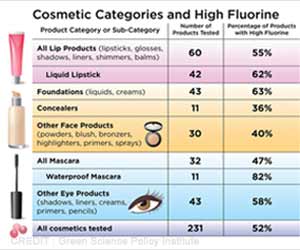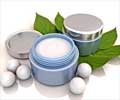- Forever chemicals don’t naturally degrade and are known to accumulate in the body and soil
- In beauty products, these substances are added to make them water-resistant, durable and spreadable
- Consumers should avoid products containing “perfluoro” on the labels to reduce their exposure to toxic chemicals
Forever Chemicals: Hidden Danger in Routine Life
Although the most concerning PFAS are no longer used in many beauty products, in some cases they’ve been replaced with other classes of PFAS that have unknown health and environmental impacts. And a recent study found that numerous cosmetics in the U.S. and Canada still contain these substances (1✔ ✔Trusted SourcePer and Polyfluoroalkyl Substances (PFAS) in Cosmetics
Go to source).
Is Your Long-lasting Makeup Toxic?
In 2020 and 2021, they purchased 38 beauty products available from local stores in Canada and online that contained organo-fluorine compounds and analyzed them for older types of PFAS.All of the samples had measurable levels of PFAS, but some of the detected compounds weren’t listed as ingredients in the products. The levels found in personal care products were generally lower than in cosmetics.
They identified that two foundations, labeled with terms similar to “water-proof,” had high levels of total PFAS, one of which had thousands of parts per million (ppm), a level that exceeds proposed Canadian PFAS regulations.
Then, the researchers took a subset of the purchased items and screened them for over 200 additional PFAS, including the emerging classes that are replacing legacy compounds.
One emerging class — monohydrogen substituted perfluoroalkyl carboxylic acids — was found in 30% of the subset with amounts from less than one ppb to hundreds of ppb (2✔ ✔Trusted Source
Targeted and Suspect Screening of Per- and Polyfluoroalkyl Substances in Cosmetics and Personal Care Products
Go to source).
These results show the diversity of PFAS compounds, and the wide range of their amounts, present in some cosmetics and personal care products currently sold in Canada, but the researchers say more work is needed to understand where unexpected PFAS come from.
- Per and Polyfluoroalkyl Substances (PFAS) in Cosmetics - (https://www.fda.gov/cosmetics/cosmetic-ingredients/and-polyfluoroalkyl-substances-pfas-cosmetics)
- Targeted and Suspect Screening of Per- and Polyfluoroalkyl Substances in Cosmetics and Personal Care Products - (https://pubs.acs.org/doi/abs/10.1021/acs.est.2c02660)
Source-Medindia











